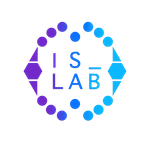N. Bassiliades, I. Vlahavas, “Processing Production Rules in DEVICE, an Active Knowledge Base System”, Data and Knowledge Engineering, Elsevier, Vol. 24, No. 2, pp. 117-155, 1997.
Author(s): N. Bassiliades, I. Vlahavas
Appeared In: Data and Knowledge Engineering, Elsevier, Vol. 24, No. 2, pp. 117-155, 1997
Keywords: Knowledge Base Systems, Production Rules, Active Object-Oriented Databases, Complex Events, Discrimination Network.
Tags:
Abstract: Production rules are useful for several tasks of active database systems, such as integrity constraint checking, derived data maintenance, database state monitoring, etc. Furthermore production rules can express knowledge in a high-level form for problem solving in Knowledge Base Systems (KBS). Present active object-oriented database (OODB) systems traditionally provide event-driven rules which are triggered by events, i.e. database modifications. This paper describes DEVICE, a high-level rule integration scheme into an active OODB system, resulting in an active KBS. The paper emphasizes on the run-time processing of production rules, namely the incremental matching of rule conditions, as well as rule selection and firing. The matching of production rules requires special algorithms based on the flow of updated data through a discrimination network, like RETE, TREAT, etc. DEVICE offers a smooth integration of production rules into an active OODB system that only supports event-driven rules, without introducing new data structures, maintaining at the same time the properties of discrimination networks. This is achieved using complex events to map the conditions of production rules and monitor the database to incrementally match those conditions. DEVICE maps each production rule into one event-driven rule that is easy to maintain and offers centralized rule selection control for correct run-time behavior and conflict resolution. Furthermore, DEVICE provides the infrastructure for the integration of various other rule paradigms into a single KBS, like deductive rules and integrity constraints and leaves room for the optimization of the matching process through variations of the basic discrimination network.
See Also: DEVICE
